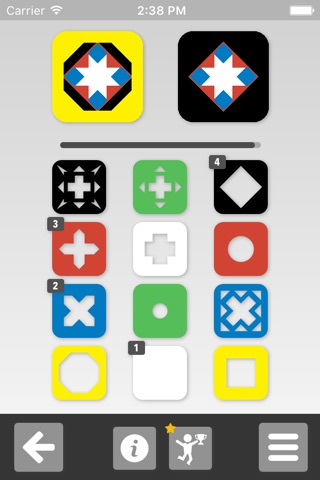
Art of Perception: Ravioli app for iPhone and iPad
Developer: Peter Kibble
First release : 04 May 2016
App size: 46.15 Mb
A tasty perceptual puzzle to give your brain some food for thought.
This beautifully simple and elegant little game is designed to challenge your visual perception. Its clever use of negative space and bold geometric shapes create abstract patterns that trick your brain into seeing what’s not there.
The rules for playing this traditional pattern game are simple:
• Copy the pattern.
• Beat the timer to win points.
• Make mistakes and lose points.
The game starts very simply and easily, with just two layers and two colors. Finding the solution is much harder than you might think. Even at this simple level you are tricked into picking the opposite of what you see.
At each level another layer and color is added until there are six layers and six colors. Your challenge is to identify the stencils and put them in the right order.
Just when you feel you’ve mastered the art of Ravioli, the challenge extends. Layers and colors are removed, creating composite shapes that your brain sees but aren’t actually there. You see a star – but there’s no star stencil, it’s an illusion created by the interaction of two geometric shapes of the same color.
As you progress through the levels, you become better at seeing what’s not there, learning to decode geometric illusions of increasing complexity. How far can you go? In the hardest puzzles there are six layers and just two colors designed to challenge even the most astute visual thinkers.
This classic game of stencils will give you hours of contemplative entertainment. Enjoy!
FEATURES
• 225 puzzles
• 144 unique stencils
• 15 levels, from easy to extremely challenging
• No adverts
• No in-app purchases
• Around 12 - 20 hours play - depending on your skill level
• Game Center Leaderboard to compete with friends.
• Reset each level without losing your high score
• Reset the game without losing your high score
• Introductory video
• Getting-started slide-show tutorial
History and Psychology
The game was originally designed in 1929 as a non-verbal, non-numeric IQ test using 20 cardboard stencils. You were given a set of 12 patterns to copy in 4 minutes by manipulating the stencils. In the 1980’s the game was developed in a printed format as a tool for teaching problem-solving strategies and thinking skills in cognitive education.



